
Second attempt. I was planning to head to India after kicking off the new year, 2018, in Sri Lanka, before discovering that I need a visa. Diverted my route, spending 45 days traveling through the south east, passing through Malaysia, Brunei, Singapore and Indonesia, then decided to make it back to my original route (West to East), after getting my Indian e-visa approved.

For American citizens, an e-visa ($75) is obtained online easily, however it needs to be applied for at least 4 days before arrival date. The e-visa is valid for 60 days, with a double entry. For Egyptians, a visa need to be processed at the embassy. Moving From South to North was my rough plan for India, starting at Kochi, a popular destination in the state of Kerala, which lies in the south west overlooking the Arabian sea.
Kochi
Stayed in Fort Kochi, a fort that manifests a mixture of Portuguese, Dutch and British influence. The fort area contains two beaches, mostly frequented by locals, with a beachfront path connecting both.

Beach establishments grilling fresh seafood are all over the place; Chinese net fishing is carried out in this area, and the fresh catch is sold immediately. The ‘Jewish town’ is another nice area for walks, more like a bazar with many small shops selling gifts, clothes and other Kerala crafts.
Within the same beach vicinity, you may come across music stages playing live Indian music. Surrounded by popcorn, cotton candy and ‘spicy-fruit’ stands, the place is perfect for local families to spend their afternoons and early evenings.
The bars are not of abundance not only in Kochi, but Kerala as a whole; alcohol consumption is pretty limited, and the beverage outlets are owned and operated by the state. You will find a couple of bars here and there, nonetheless. In Kochi itself, away from the fort, some clubs can be found in the nicer hotels; I haven’t checked any of them out so can’t vouch for them.
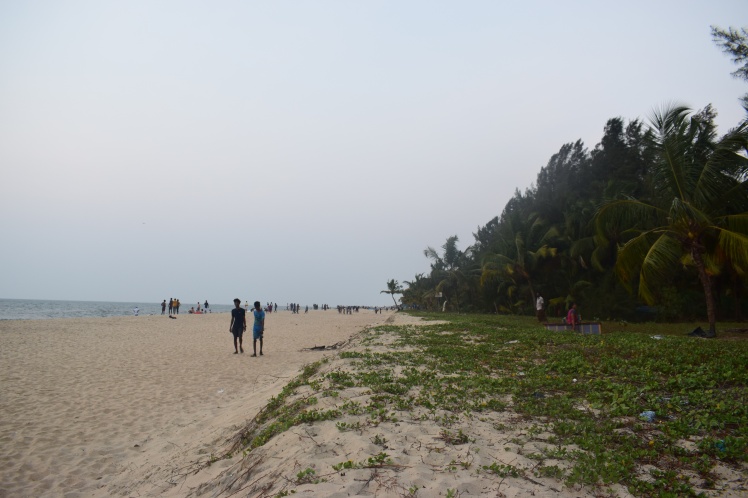
Mararikulam
The more south you go from Kochi, the nicer the beaches get. About 40 kms south, Marari beach is located. Made a stop there for a day, staying at a homestay by the beach. It was Sunday, and I came across some workers on their day off playing cards on the beach. They’re all fishermen, and one of them took me to a friend of his who has a small seafood restaurant on the beach.
He has three tables laid out, and starts fixing dinner after sunset. No electricity, just candle light, a very primitive and astounding experience. When the three tables are done with the food, he is now closed. In other words, he serves one round of food for each table and that’s about it. Almost anyone in Kochi can arrange for bringing alcoholic beverages, and this owner of the little restaurant brought me a couple of beers. I had to arrange with him well before.
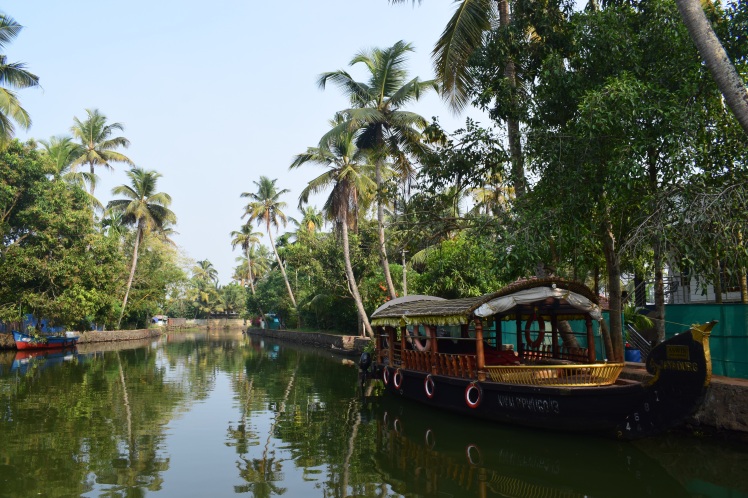
Alleppey
A trip to Kerala is incomplete without visiting the backwaters and the villages situated there. One of the towns around me was Alleppey, though there were a couple others with backwaters to choose from. Alleppey was 15 km south of Marari beach, took a public bus there. The homestay I booked for Alleppey was at a village by the backwaters; there are ferries running between the town and the villages. So, after arriving to Alleppey, took the ferry to where my village is.
Alleppey beach is another beach that can be visited while there. The beach is really wide, with some dining options and a couple of bars . The drinking establishments are not on the beach however, they are inland, separated from the beach by a motor vehicle road. Moreover, the beach has old ruins of a steel pier from colonial days. The pier was built in the late 1800s.
Ok, now to the backwater tours. There are quite a few options, the ferry, houseboats, shikaras (a motor boat that takes about 6 people) and canoeing. Each option has its pros and cons. The ferry is pretty loud and large, has a fixed route, so I wouldn’t recommend that option for a peaceful journey. For houseboats, the downside is size (won’t go in the small canals) and price (2,500 rupees/hr – about $40/hr). As a result, I would definitely vote for either shikara (500 rupees/hr – about $7/hr) or canoeing (400 rupees/hr – about $6/hr), especially if you’re alone or with a small group of people.
I ended up doing the canoeing, since I didn’t feel like hearing a motor running for the entire journey. I was taken to many small villages, had a Kerala meal, or Sadhya, which is served on a banana leaf, including Kerala matta (reddish rice), achaar (pickled mango), parippu (lentil curry), avial (vegetables mixed with coconut) and lots of other stuff that I can’t recall. The meal is vegetarian, but can be coupled with chicken or fish, if you ask.
On another note, the playful village kids made their appearance several times, I was surprised with their proficiency in English and their easiness in dealing with foreigners.
While in Kerala, the ayurvedic massage should be tried, as the region is quite famous for it. The massage is carried out by licensed doctors, and is based on an old system of traditional medicine called Siddha. Focusing on marmas and chakras (pressure points), with lots of oil and a brief meditation in the beginning, your ayurvedic massage experience will be unlike other massages.
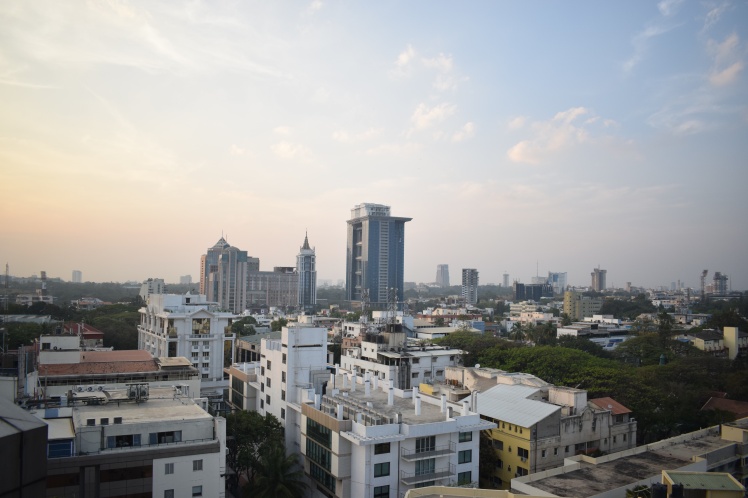
Bangalore
Made my way to Bangalore, the capital of Karnataka state, after leaving Kerala in the south, and prior to heading to Goa. Bangalore is the third largest city in India after Delhi and Mumbai, with population about 12 million. The city has a couple of old palaces worth visiting, and a ton of breweries to be checked out. Bangalore is famous for its craft beer presence.
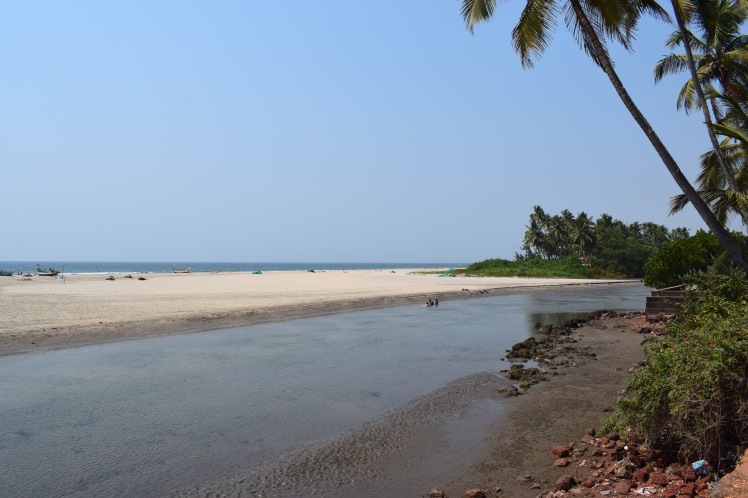
Goa
The smallest state in India. Goa has been a hot destination for travelers over the last 30+ years due to its exquisite long, wide beaches, intense parties and affordability. Goa in a state spectrum is small, however when compared to cities, it is pretty large.

South Goa is known for its relaxing beaches – more like a honeymoon getaway – with the exception of Palolem which is pretty hip. North Goa is where most of the action is. Amongst good beach towns to stay are Arambol, Ashvem, Mandrem and Morjim. The good thing about staying in one of these towns is the location. You are not too far from the popular nightlife establishments, and also not in the heart of it.
Several towns, such as Calangute and Baga got pretty mainstream in recent years, staying there is really not recommended. The time I visited was especially popular for psy trance party goers, there were daily events in the popular clubs, such as Hilltop, Shiva Valley in Anjuna. Another beach area, Vagator, contains clubs that play different type of music, house and techno.
The beaches in Goa are typically long and wide, with establishments serving food and beverages, in addition to beds and umbrella services. A few hidden beaches are scattered across the state, if you explore a little you will find. On a separate note, a scooter is a must in Goa, unless you plan to spend most of your time in the beach town that you decide on. The taxis are expensive and there are no ride sharing platforms such as Uber. So, highly advisable to have a scooter there.
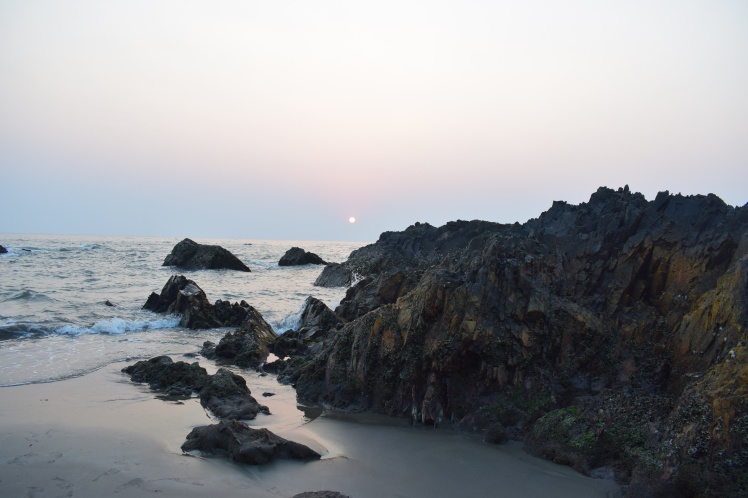
I spent about 6 weeks in India. This amount of time is far from enough for this amazing and large country. I plan to check the states of Rajasthan, Himachal Paradesh and Kashmir in my following visits, which I’m planning soon. The thing about India is that it will either completely blow you away, or will fail to make any impact on you. It depends on your preferences; for me it completely blew me away. Looking forward to be back.
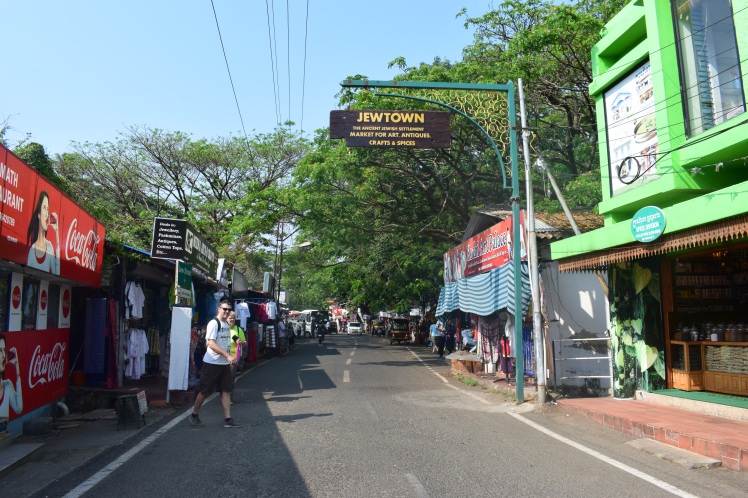






















lovely post, as usual! 🙂
LikeLike
Thank you!
LikeLike